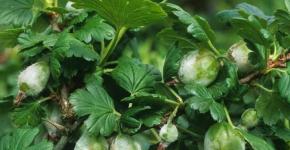Shiritsa ordinary herb: description, useful properties, application
The annual plant shiritsa vulgaris is a weed that many have come across in vegetable gardens and fields, on the side of roads. Not everyone knows that traditional healers consider this herb to be a medicinal plant containing many useful substances that a person needs.
Description
Common schiritsa, beetroot, rubella, amaranth - all these are the names of one plant that are used in different regions of our country. And that's not all: the plant is known as velvet, cock's combs, axamitnik. It refers to those with small red flowers that gather in inflorescences - dense, spike-paniculate, rather long. The flowers of the common squid remain on the plant for several months.
It is an ancient plant that began to be cultivated in South America as a grain crop. In Spain, it was considered a flower of evil spirits, because it was forbidden there. The common beetle appeared in Europe in the 16th century, and in Russia - in the 19th. In Sweden, a special order was even established for the Shiritsa.
It is an annual herb with a tall, thick stem up to one meter high with oblong-lanceolate, alternate, pointed leaves covered with purple-red spots. Flowering begins in August with small flowers that gather in paniculate spike-shaped inflorescences. The common beetle blooms until the very frost.

The seeds of the plant are shiny small black grains. Today, there are about a hundred species of plants belonging to this family that grow in temperate warm regions. Most of them are weeds.
Some species of the squid belong to a valuable food crop. Today, decorative varieties have been developed that adorn garden plots in autumn. The dried flowers of this plant bring back pleasant memories of summer in long cold winters. Translated from Greek, amaranth is translated as "unfading flower." Under natural conditions, amaranth can be found in China and India.
Application of the squid
In many countries of Southeast Asia, Europe, Africa, the squid is referred to as a fodder and medicinal plant. The grains are used to make flour and confectionery products, drinks. Fresh and dried leaves are fried, steamed and canned. In Asian cuisine, the common herb is used as a delicious vitamin supplement to salads, fish, and meat. In Greek cuisine, sprouts are poured with olive oil, lemon juice is added and used as a side dish for fish dishes.
In folk medicine, they are used as a means to strengthen the body. Chinese healers treat tumors and fight aging with the help of oil from seeds of apex. Shrimp oil contains the unique element squalene (more on that below). The seeds of the common squid are recommended for use as additives in dietary products: bakery products, cereals, confectionery and

Flour from duckweed has biological value, is a source of calcium, magnesium, phosphorus, vitamins C and PP. It is gluten-free and may well become the mainstay of the diet for celiac patients, without the addition of wheat flour. In Russia, this plant is grown as an ornamental and for animal feed. Getting into the garden, field, common beetle, a photo of which you can see in this article, grows rapidly. It is considered a very difficult weed to control.
Common schiritsa: useful properties
Despite the fact that the squid, or amaranth, is a weed, and before it was most often used for livestock feed, people eventually noticed its beneficial properties, began to use it for treatment. Each part of the common beetle has a rich biological and chemical composition:
- proteins, including albumin and globulins;
- fats;
- dietary fiber (fiber);
- carbohydrates;
- tocotrienol form of vitamin E;
- carbohydrates;
- squalene;
- the amino acid lysine;
- flavonoids (rutin, quercetin and trepholine);
- phospholipids;
- vitamin C;
- B vitamins;
- retinol (vitamin A);
- niacin;
- pectins.
The plant contains a huge amount of micro- and macroelements: calcium and potassium, manganese and magnesium, fluorine and sodium, zinc and iron, copper and selenium. The leaves and seeds of the common squid contain a fatty oil saturated with bound acids (oleic, stearic, linoleic, palmitic). The roots contain:
- amarantine;
- isoamarantine;
- isobetanin;
- betanin;
- alkaloids.
Squalene
It is especially necessary to dwell on this substance, which is part of the plant. Squalene is a triterpene hydrocarbon belonging to the group of carotenoids. Its peculiarity is to help oxygenate the cells of the body.

Taking an active part in metabolism, squalene affects cholesterol levels. What's more, it has antimicrobial properties. This substance is often used in cosmetology. Its pronounced anti-aging properties are used in the production of anti-aging cosmetics.
Common schiritsa: medicinal properties
Due to its rich vitamin and mineral composition and high energy value, traditional healers and doctors of traditional medicine actively use this amazing plant in their practice. Preparations based on it are indicated for the treatment of:
- some diseases of the genitourinary system;
- infantile nocturnal enuresis;
- restoration of the body in case of anemia, vitamin deficiency and loss of strength;
- painful sensations with hemorrhoids;
- atherosclerosis;
- overweight and obesity;
- diabetes mellitus, as a preventive measure;
- neurosis.
How does recovery take place?
Decoctions and infusions of the plant are used to treat skin lesions, dental diseases (periodontal disease, stomatitis), and the healing of ulcers of the gastrointestinal system. Schiritsa stimulates:
- saturation of organs and tissues with oxygen;
- the immune system to resist viruses;
- the formation and development of cancer cells is prevented;
- the blood is cleared of infections;
- heavy metals and toxins are removed;
- visual acuity improves;
- recovery from serious illnesses and radiation therapy is accelerated;
- regenerative functions are activated.
Chicken recipes
The healing properties of the common squid are used in many preparations based on this plant. We will introduce you to some of them.

Decoction from the roots
To prepare this remedy, you will need fifteen grams of dry crushed raw materials, which are brewed with boiling water (200 ml). Then the container with the herb is placed in a water bath and boiled for thirty minutes. Within ten minutes, the composition is allowed to cool and filtered. Take a third of a glass twice a day.
Infusion of leaves
Pour twenty grams of dry leaves with 250 ml of hot boiled water. Boil in a water bath for a quarter of an hour. For forty-five minutes, the product should be infused, after which it should be filtered and the composition can be taken in a third of a glass twice a day.
Infusion of leaves (fresh)
Pour 200 ml of boiling water over one tablespoon (tablespoon) of chopped grass leaves. Wrap the container and let it brew for about forty minutes. Strain and take with honey in a quarter of a glass for acute pain in the stomach three times a day.

Squid oil
This grain-derived substance is rich in squalene. It contains vitamin D, which is necessary for the full synthesis of the hormone. In addition, it is beneficial for human skin and has many medicinal properties. The seeds are rich in vitamin E - the best antioxidant. In all respects, the oil from the seeds of the squid is superior to the sea buckthorn oil.
Bath decoction
Boil chopped dry grass (400 g) with two liters of boiling water and boil for another fifteen minutes over low heat. Let the product steep for half an hour and pour it into the bath. This bath is recommended three times a week for skin diseases. The duration of the procedure is no more than half an hour.
Vodka tincture
Pour vodka on the dry grass of the common squid (flowers and leaves) and put in a dark place for two weeks. Strain and take on a spoon (teaspoon) diluted in a small amount of water before meals for diseases of the genitourinary system.

Shpirin Juice
In case of diabetes mellitus, gastritis, pain in the liver, folk healers recommend taking the juice of the squid mixed with homemade sour cream and cream. Juice is prepared as follows. Juice is squeezed out of fresh leaves, after passing them through a meat grinder or chopping with a blender. You can use a juicer.
The juice is mixed in a 1: 1 ratio with cream. It should be taken three times a day in a spoon (tablespoon) after meals.
Treatment of bedwetting
A spoon (tablespoon) of crushed squid inflorescences together with seeds must be poured with 250 ml of boiling water and the container must be placed in a water bath for twenty minutes. After the indicated time, leave the product to cool completely. Then strain and take in a spoon (teaspoon) with 50 ml of water. It is taken three times a day, thirty minutes before meals and before bedtime. The course of treatment is designed for two weeks.
Anti-aging blend
This is a unique composition that removes toxins and other harmful substances from the body. To prepare it, you will need an assortment, St. John's wort, birch buds and chamomile, one spoonful (tablespoon). Brew two spoons of the collection with 500 ml of boiling water, let the composition brew for three hours and strain it. The mixture is taken twice a day, one glass - in the morning on an empty stomach and at night, adding a spoonful of honey (tea). Warm up the infusion before taking it. Re-taking this anti-aging mixture is carried out no earlier than two years later.
Contraindications
Like all medicinal plants, shiritsa has limitations in taking drugs based on it. These include:
- cholelithiasis;
- pancreatitis;
- celiac disease;
- urolithiasis disease;
- individual intolerance;
- cholecystitis.


